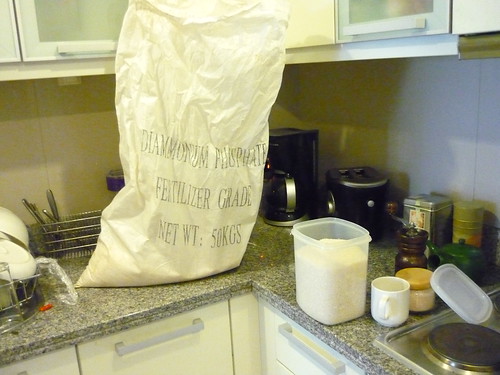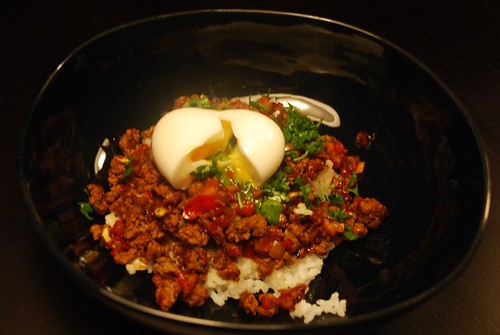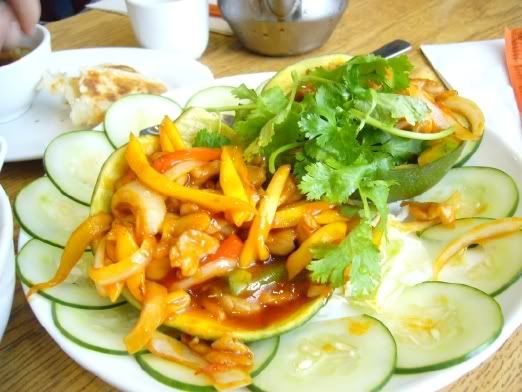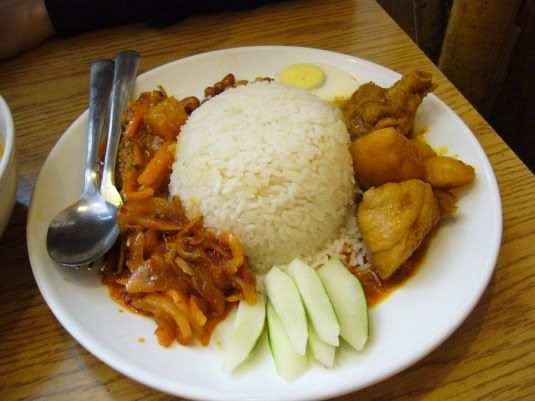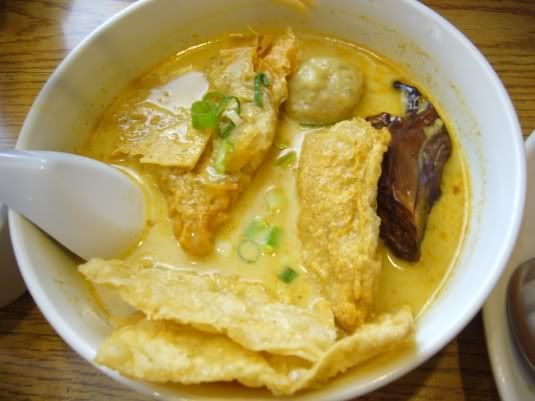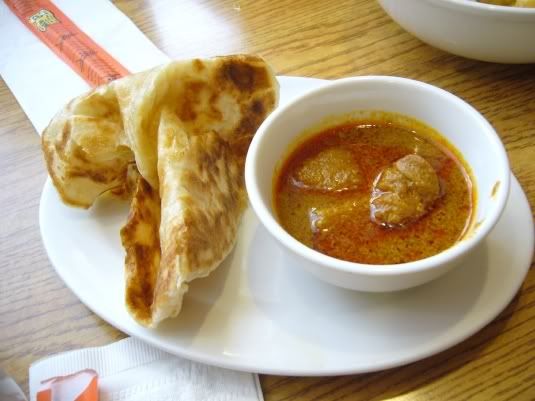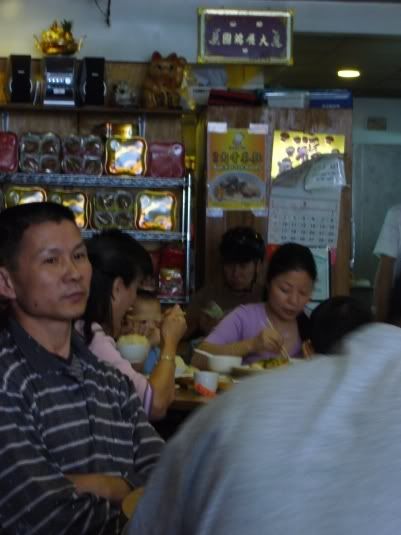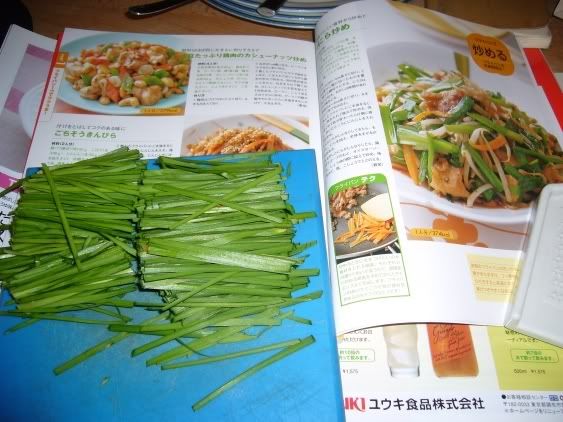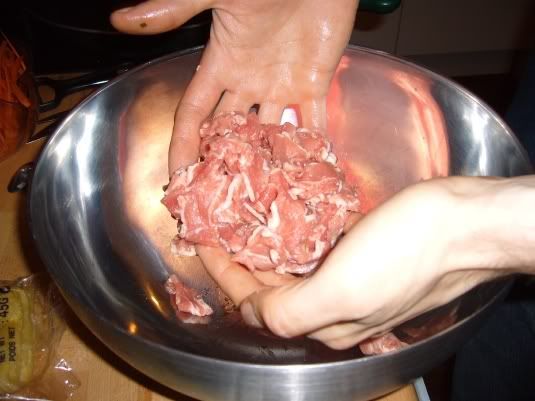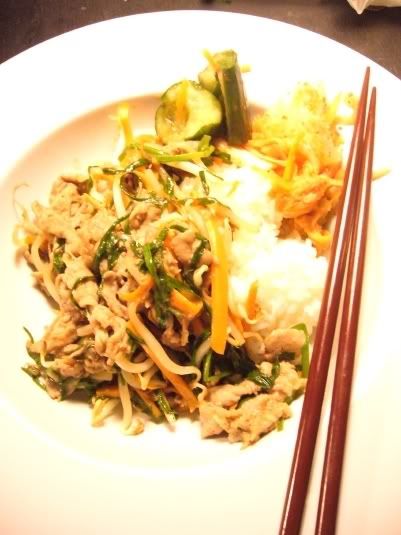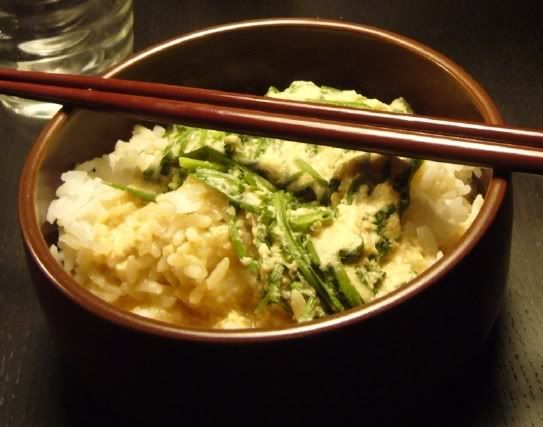Been fantasising lately about the killer Egg Sambal I used to get as a teen in Wellington (where Cuba St is to burning chilli & roti takeaways what Brick Lane is to tikka masala or vindaloo delites). Then I moved away and not sure what happened to that restaurant. Sounds like KK and Satay Kajang are the new kids on the block these days in Wellingtown.
For some reason Malaysia's erstwhile national dish, coconut rice, was never offered, but having heard about it from Han, I found a recipe online and will share it at the bottom of this post. I also took a recipe for dry egg sambal and beefed it up to approximate the nostalgic sambal I remember from my gory days, using onions, fresh tomatoes etc, and will post that soon. It worked. Yums!
Who better though to consult about the tang & the bang in Malaysian cuisine, than dj Han Baby?
Han Baby is well known in Auckland's shady ghetto-fabulous electro bass underworld as the ying to the Coco Solid pu-yangy, tuff on the outside but soft-hearted &creamy like coconut rice on the inside. He granted a rare interview divulging his fatty rice expertise.
 What do real gangstas eat in KL?
What do real gangstas eat in KL? Well, it's been years since i've been hustlin in KL, so i can't
really speak for the johnny-come-latelys, but back in the day, we
would eat anything. it kinda depends on the crew that you're bangin
with, really. as u know, malaysia is made up of 3 main races, the
malays, the chinese and the indians. so it goes with the turf, but a
multi-cultural OG like me run with all bangers. when i'm with my
malay boys, we're hitting the warongs (warong=malay for foodstall)
for satay (meat skewers, super delicious, but not like the ones u get
in western countries, it's smaller and grilled on charcoal before u,
and u have with peanut sauce) and ketupat (rice dumpling wrapped in
woven palm leaf pouch, very cute and kampong(village)-like, u also
have with peanut sauce). when i'm with my indian brothers, we're
kickin it at the local mamak (malay/indian mix foodstall) where u can
have all manner of rotis (roti=malaysian-style bread) with your
favourite curries. when i'm with my cousins, u can find us at 24-hour
yum chars talkin shit about other chinese families. it's totally ok
to cross turfs but u need to know people of the race turf so others
won't wanna pick a fight with u. the malays don't normally eat at
chinese establishments cos we eat pork and that's against islamic
beliefs.
Where can u get the best nasi lemak in Malaysia? Boy, u got me thinkin. But my favourite has to be the joint in
senibong. senibong is a coastal village close to where i grew up in
johor bahru, by the straits looking onto singapore island. like most
coastal villages, there are many restaurants/collection of foodstalls
that are built on wood out to sea (can't remember word for it) where
u walk a length of wooden planks and eat out at sea. here u will find
cheap awesome food of all varieties. the straits is really dirty on
malaysian side so it's not really a tourist destination, only locals
go there. everytime i go back, i go with my best mate G to eat there.
they make the best nasi lemak i've ever tasted and so humble too. as
you're eating it, you're thinkin, "this must be what they serve in
heaven". you are high.
Here's a photo i found of us eating there, on the right is pot (G's
brother, G took the photo).
 Does Nasi Lemak really mean rice with fat?
Does Nasi Lemak really mean rice with fat? Literally, rice=nasi and lemak=fat (not verb, but actual food fat).
as u know, it's rice cooked in coconut milk, traditionally high in
fat, therefore, it's known affectionately as fatty rice.
Do u cook with that Belacan [shrimp paste] stuff in NZ? Wow, how did you know about belacan? it's like the malaysian secret to
super awesome flavour. i must kill u.
ps. no i don't cos i'm too lame, but i frequent many places that do
in nz. pretty good too, i hook u up.
Where is the best malaysian food u have had in NZ? Mang, ur asking some toughies. but i gotta go with kk on manukau road
in auckland. they cook awesome penang-style food (chinese). and when
you're there, u gotta order the kk special eggplant. it's eggplant
with (u guessed it!) belacan! best in nz i've had so by far. in fact,
i just had it the other day. this chick asked me out to dins and said
she wanted some malaysian, to which i replied, "are u coming on to me?"
ps. i didn't hear a "no".
What is the most gangsta-hot malaysian dish and what are the side effects? Most malaysian dishes are hot to begin with, but u can always request
it to be made extra pedas (HOT!) and kick your party into overdrive.
side effects include driving your shit crazy and wishing u could live
life this much to the max all the time.
What wheels do gangsters drive in KL? The last time i was back, the city was overrun by motorcycle gangs.
they be driving down the highway in the dozens, and i'm not talkin
harleys here, these are bad boy 120cc bikes terrorizing cars and
trucks and the like. these days though, u will probably find these
road warriors on a different highway, the information superhighway
(internet), such as u and your gang of misfits on your blog.
ps. everyone gets real flashy with their rides, but we're ghetto so
we just drive G's dad's car. whichever one has more petrol.
What is a hardcore malaysian diss? "Pukimak" is a common malaysian one, it's means your mother's pussy,
kinda like "(fuck your) mother's pussy". the chinese say "kan ni na",
which literally means "fuck your mother's pussy". if you're in
berzerk mode, u say "cau cibai" (even the malays know this one),
which means "(your mother's) smelly cunt". seems like mums get a bit
of a beatdown in these parts eh.
What is the most common liquor in Malaysia for gangsters? U know what, i can't stand drinkin beer in malaysia, but can't get
enough of it in nz. maybe it's the weather or somethin, but hard
liquor is the shit in malaysia. i love whiskey and johnny walker is
very popular. not just among the kids but also with business men at
karaoke bars. they be shy and shit but after a few drinks, they're
belting out their favourite ol-skool jams in front of everyone.
shameless.
ps. good luck with your cooking and all the best to your culinary
journey.
